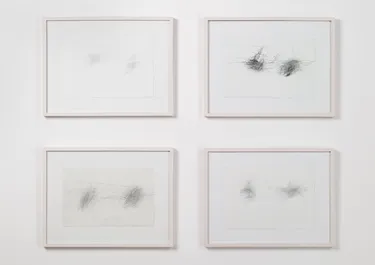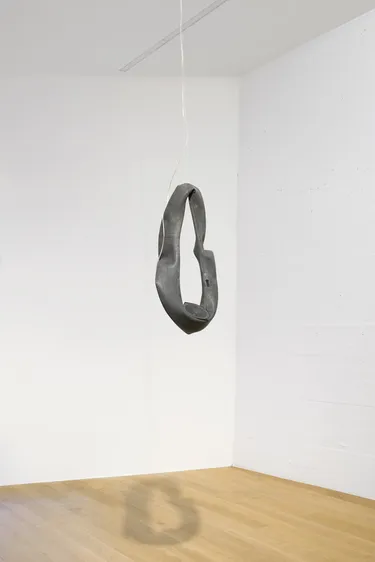William Anastasi

About the Artist
William Anastasi was born in Philadelphia in 1933 and moved to New York in 1962, where he died in 2023. He was a self-taught artist who approached art after learning about the works of Duchamp, which inspired him to become one of the first American conceptual artists. He moved to New York and befriended John Cage, with whom he entertained an assiduous relationship, spending many days playing chess with him - another Duchampian legacy shared by the two artists.
Throughout his career, Anastasi has worked across a variety of media, including painting, sculpture, photography, sound, installation, architecture, bodywork,film, performance as well as language-based and literary works.

Untitled (Subway drawing)
1960’s – 2000’s
Graphite on paper
Subway drawings are drawings that he began to make at the end of the 1960s, following the first experiments consisting of blind drawings (made while blindfolded and listening to classical music) and pocket drawings (made while walking with a pencil tracing marks on a sheet of paper folded and kept in a pocket). These are drawings completed while travelling on the underground, putting an album on the lap, sitting down, holding a pencil in each hand, and letting the movement of the train guide the hands in composing a 'seismographic' trace of the journey on paper. With his eyes closed and often wearing headphones to listen to music, these works are realised in the time of a journey, mostly made to visit some friends in the art world. Common elements across this corpus are the themes of randomness, the perception of space and time, and a sense of process that becomes an almost daily exercise, like a wandering meditation, a therapy capable of systemising philosophical and spiritual suggestions (phenomenology of perception, transcendental meditation) that were beginning to be popular in those years.
In the series titled Sound Objects, William Anastasi centralized the role of sound. Audio is key to his artistic production, however, unlike, for instance Yves Klein or Jean Dubuffet, he has never made music as an extension of his visual practice. The elements of Anastasi’s sound art are very often tautological recordings of everyday sounds, and field recordings incorporated into installations featuring the very machinery he used to produce the works.
By displaying the object and its sound side by side, he achieves a mise en abyme enacted through the visual ploy whereby a photograph is followed by a photograph of that same photograph and so on, until a potentially infinite sequence is iterated.
In Untitled 1964 (sound ⁄ object ⁄ deflated tube), Anastasi reverses the idea of Robert Morris’s Box with the Sound of Its Own Making (1961) by recording the process whereby an object is deactivated rather than activated. This is the case for the deflating tire featuring in one of his works. Anastasi’s oeuvre is emblematic for its conceptual use of tautology, repetition and seriality, supported by the continuous questioning of reality, of its perception and the capability of art to synthesize these two elements.
Anastasis Werk steht für die konzeptionelle Verwendung von Tautologie, Wiederholung und Serialität in einer kontinuierlichen Hinterfragung der Realität, ihrer Wahrnehmung und der Synthese dieser beiden Elemente durch die Kunst.